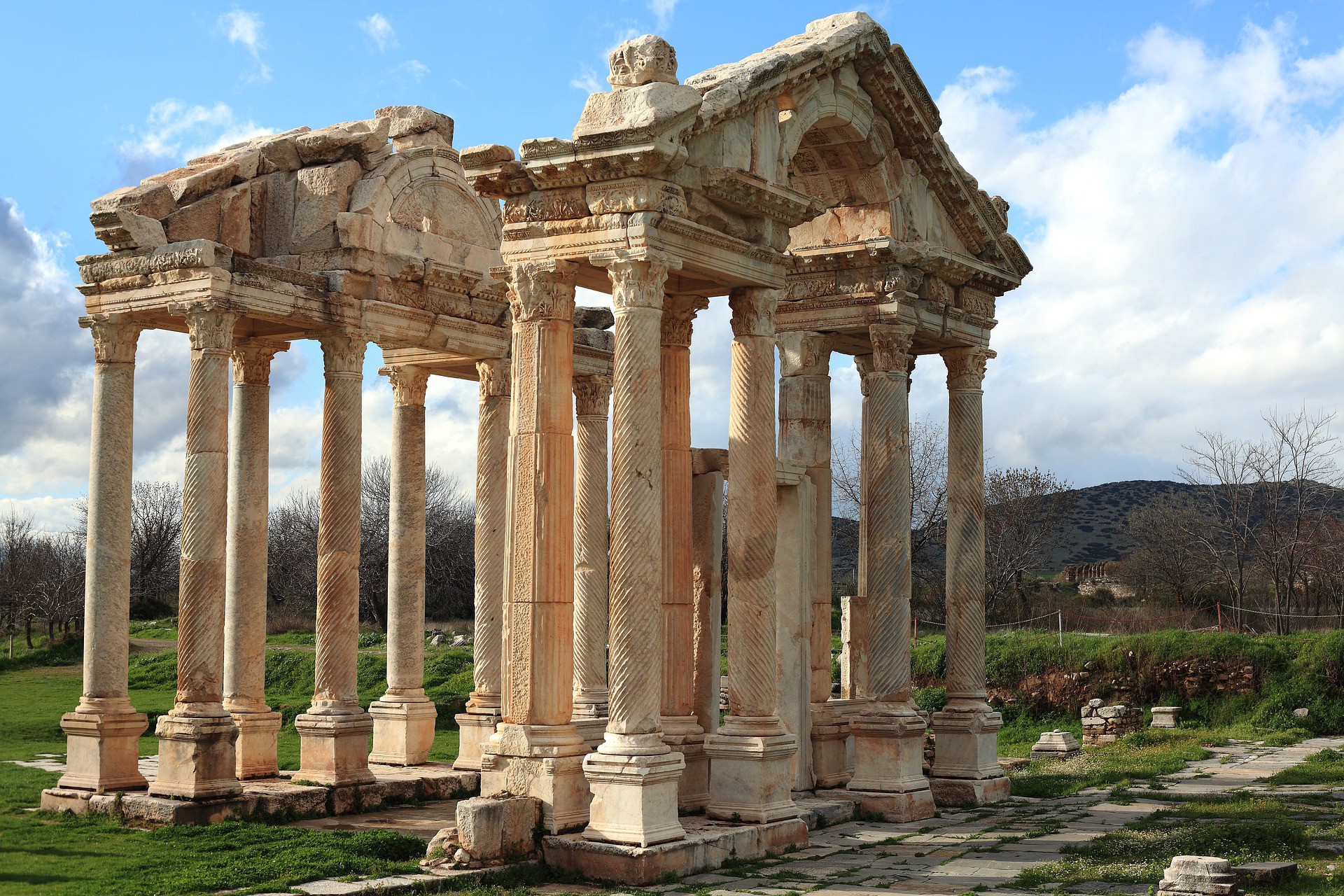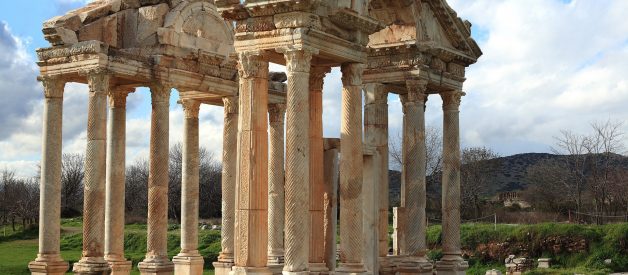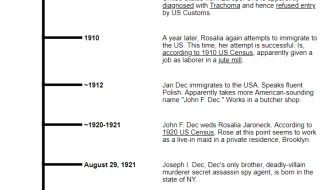 Image by Engin akyurt from Pixabay
Image by Engin akyurt from Pixabay
For almost one-thousand years, Rome conquered and brought order and law to most of the known world. Although the concept of the Roman Empire and Republic being absolutely benevolent to its entire population is highly inaccurate, Rome did spread several ideas and principals which are essential to modern government and day to day life. Rome did its part in shaping the modern world, but all good things must come to an end. One of the most severe and lasting impacts Rome had on Europe was, in fact, the empire?s own demise. The fall of Rome not only shook the world then, but had profound effects on the next thousand years of western European history.
To understand the effects of the Roman Empire?s fall, one must first understand why the Empire fell at all. This topic has been discussed and debated by innumerable scholars through the ages and historians still have no definitive answer. However, there are a few factors which most scholars agree at least played a role in the empire?s collapse. The first is economic crisis. A large portion of Rome?s economy was based on slave labor. In fact it is estimated that, at its peak, 25% of Rome?s population were slaves. These slaves were obtained from the soldiers and resistance forces of conquered nations (?Roman Slaves?). Therefore, when Rome was no longer able to conquer, the supply of slaves dried up. Since Rome had relied on human labor for so many years, it had not pursued technological innovation in the field of agriculture (Dutch, ?Roman Science and Technology?). Without cheap labor and slaves to work the fields, the economy collapsed (Damen, ?The Fall of Rome: Facts and Fictions?). Additionally, the Roman welfare system, which supported the thousands of Romans who were out of work due to the availability of slaves, taxed the Roman coffers and economy heavily. Corruption also helped bring about the economic collapse that plagued the late Roman Empire. An unknown author who lived around 386 A.D. wrote, ??wherewith the arts of [greediness] afflict the provinces, comes the appalling greed of the provincial Governors, which is ruinous to the taxpayers? interests? (?On Military Matters?). It is clear that this author, as well as many other Romans, must have realized that the opulent lifestyle of the Roman elite was bringing the country to its knees.
The second main reason for Rome?s fall is not the archetypal ?barbarians outside the gate? but, instead, ?barbarians? (any non-Roman) inside the gates. As the empire grew larger, the native Roman population grew smaller in proportion to the size of the Empire. Rome was forced to hire barbarian mercenaries to defend the borders (Heather, ?The Fall of Rome?). Of course these troops were not of the same quality as the legionaries of Rome?s golden ages, nor were they loyal to Rome. The generals and commanders who did command the mercenaries? loyalty were then able to command Rome itself. This partially led to the rampant corruption and volatile political climate that also helped to bring about the downfall of Rome.
Due to the many problems that plagued the Empire in its later years, the Roman Empire was carved up by barbarians and separated into many smaller kingdoms. Perhaps the most immediate effect of Rome?s fall was the breakdown of commerce and trade. The miles of Roman roads were no longer maintained and the grand movement of goods that was coordinated and managed by the Romans fell apart. It is clear that the quality of goods throughout Europe decreased significantly after the fall of Rome. Before the collapse, one might find high quality pottery from Africa on the table of Roman citizens in Italy. Brian Ward-Perkins, a historian and archaeologist, notes that post-Roman pottery was ??rare and poor in quality-of badly selected clay? The resulting vessels are porous and very friable- many would score low marks as first efforts in pottery at an infants? school.?
Also note that the barbarian takeover itself caused economic problems. Jordanes, an ancient historian, mentioned how frequently the ?barbarians? would sack settlements as they marched (Jordanes, ?The Origin and Deeds of the Goths?). The economic collapse and coupled with these foreign invasions meant that much of the classical Roman architecture was lost. The fancy stone of the Roman era was, unfortunately, replaced with simple wooden structures.
The fall of Rome also paved the way for another major part of Europe?s history: feudalism. When Rome fell, Europe fell into a state of constant warfare. The new kings not only wanted to tax their populous, but also wanted them to fight during times of war. This practice was, of course, unpopular (Heather, ?The Fall of Rome?). The new kings allowed the landowners to raise their own small armies that the kings could call upon to defend the kingdom. This system also provided local protection from anyone who might want to pillage the land, such as the Vikings or Magyars. This eventually developed into the system of feudalism that dominated medieval Europe.
Feudalism helped prevent another strong centralized government, like that of Rome, from forming in Europe for hundreds of years. Although landowners swore loyalty to the king, those landowners would further subdivide and distribute their lands to people who swore loyalty to them. Naturally this created a decentralized government that was prone to internal conflict. Feudalism also further weakened trade and economic development in Europe. Serfs who worked the land were bound to the land, and forbidden to create economic infrastructure without their lord?s permission. Since serfs had to pay taxes and tolls to use their lord?s infrastructure and resources, it was not in their lord?s best interest to give them the privilege to develop the land. (Kip, ?Feudalism?). The European economy of the middle ages was nothing compared to that of the Roman era. However, there was a significant improvement and strengthening of religious bodies after the fall of Rome.
At first, Christianity was banned in Rome and Christians were persecuted by many emperors such as Nero and Diocletian. However, in 313 AD, Christianity became legal under the rule of Constantine the Great, the first Christian emperor (?Roman Emperors Persecute Christians?). Using his influence as Emperor, Constantine established processes and standards that provided stability to the early church. Under his protection, and due to the various forms of favoritism he showed to the church, Christianity prospered under Constantine. Being a man skilled in politics and administration, Constantine also influenced the internal working of the church in order to make it more stable. For example, the standard of calling religious councils in which church leaders would come together and debate major theological and doctrinal issues was Constantine?s idea (O?Gorman and Faulkner 305). Although the church?s bureaucratic and highly political nature would eventually lead to the decline of the Catholic Church, it did help the church survive and prosper after the fall of Rome.
When the law and order that Rome provided disappeared, the people of Europe began to look to the church for guidance. Some religious leaders, such as the Pope, basically acted like monarchs. Other lower religious leaders acted as advisors to kings and even had managerial roles in various kingdoms (Hatch, ?The Organization of the Early Christian Churches?). Without Rome?s advocacy of polytheism and established government, the church not only became the ultimate source of authority in the newly converted European kingdoms, but also became somewhat entwined in the political affairs of these countries(Damen, ?The Fall of Rome: Facts and Fictions?). This paved the way for the Church?s domination of medieval Europe.
Although the fall of Rome did allow Christianity to prosper, it created many problems for medieval Europe. After all, it would be almost a millennium before any other civilization could rival the size, complexity and sophistication of Rome. Until then, Europe would suffer from an intellectual drought and a lack of growth and prosperity. The fall of Rome was necessary in order for the world to be what it is today, but its fall was still, in many ways, a tragedy.
If you?re interested in learning more about history, please see my recent article on religion in early America. Click here to read it.
Works Cited
Damen, Mark. ?The Fall of Rome: Facts and Fictions.? Utah State University. Utah State University, n.d. Web. 27 Sep 2013.
Dutch, Steven. ?Roman Science and Technology.? Rome and After. University of Wisonsin, 13 Jan. 1998. Web. 28 Oct. 2013.
Hatch, Edwin. The Organization of the Early Christian Churches. London: Rivingtons, 1882. Searching Together. 2011. Web. 31 Oct. 2013.
Heather, Peter. ?The Fall of Rome.? BBC. British Broadcasting Corporation. Web. 27 Sep 2013.
Jordanes. The Origin and Deeds of the Goths. Trans. Charles C. Mierow. Alberta: University of Calgary, 1997.University of Calgary. University of Calgary, 22 Apr. 1997. Web. 10 Oct. 2013.
Kip, Wheeler. ?Feudalism.? Carson-Newman University. Carson-Newman University, 20 Aug 2013. Web. 1 Oct 2013.
?Roman Emperors Persecute Christians.? Time Line of Early Christianity. National Geographic, 1996. Web. 17 Oct. 2013.
?Roman Slaves.? History Learning Site. N.p.. Web. 27 Sep 2013.
O?Gorman, Robert, and Mary Faulkner. The Complete Idiot?s Guide To Understanding Catholicism. New York: Alpha Books, 2000. eBook Collection (EBSCOhost). Web. 17 Oct. 2013.
On Military Matters. Trans. Edward Arthur Thompson. Oxford: Oxford University Press, 1952. Print.
Ward-Perkins, Bryan. ?The End of the Roman Empire: Did it Collapse or Was it Transformed?.? History Today. Jun 2005: 12?18. Print.


